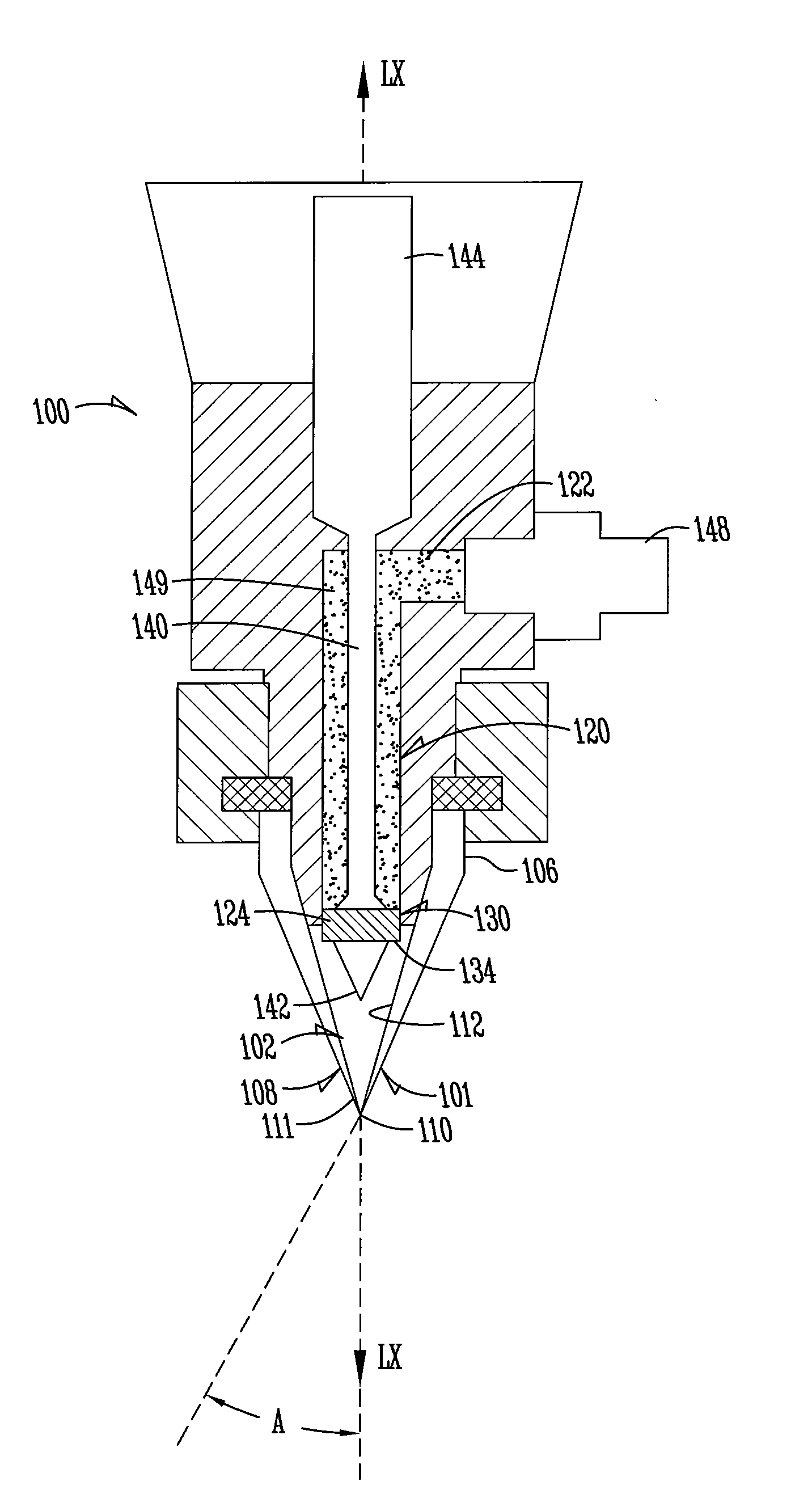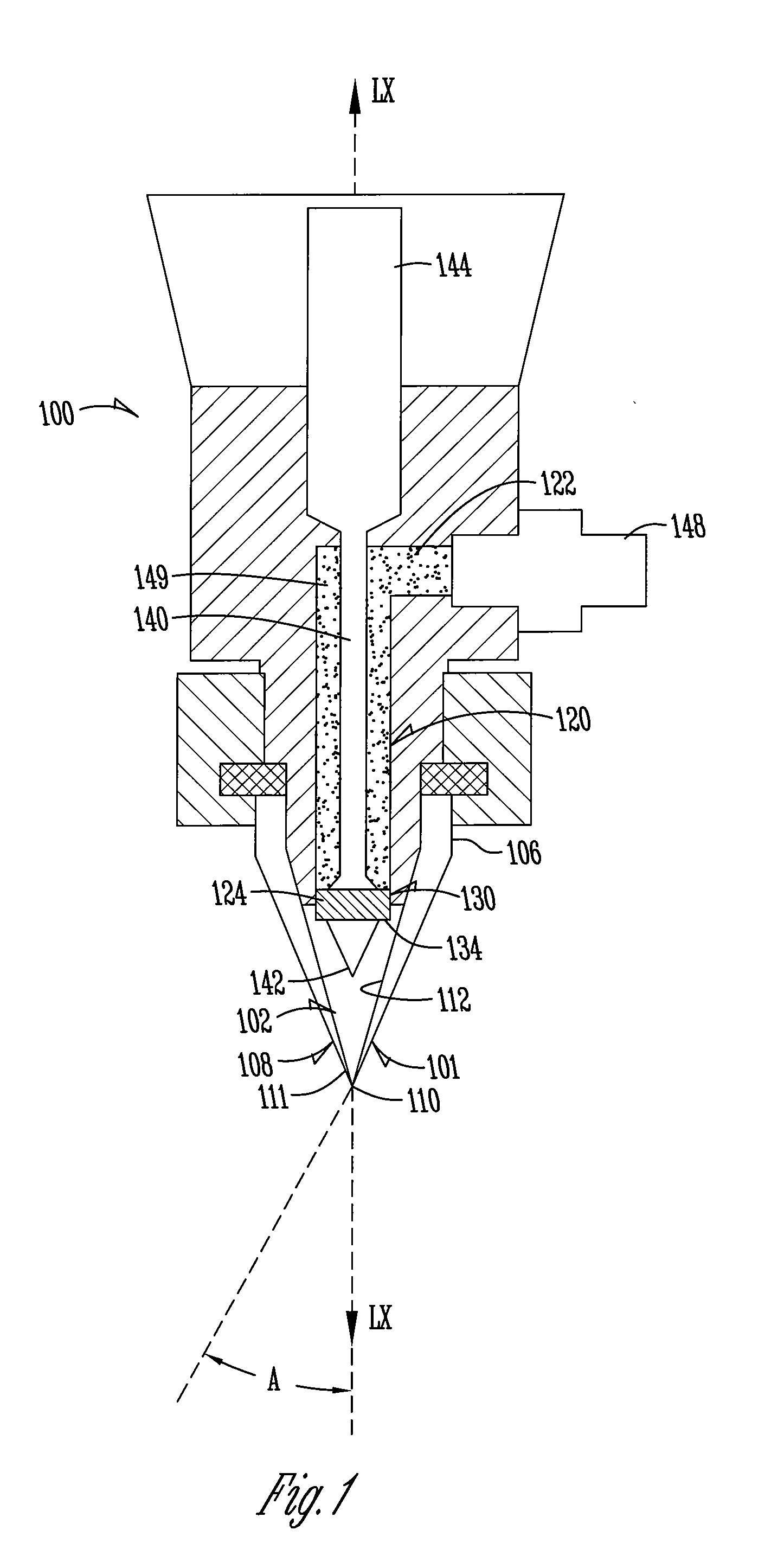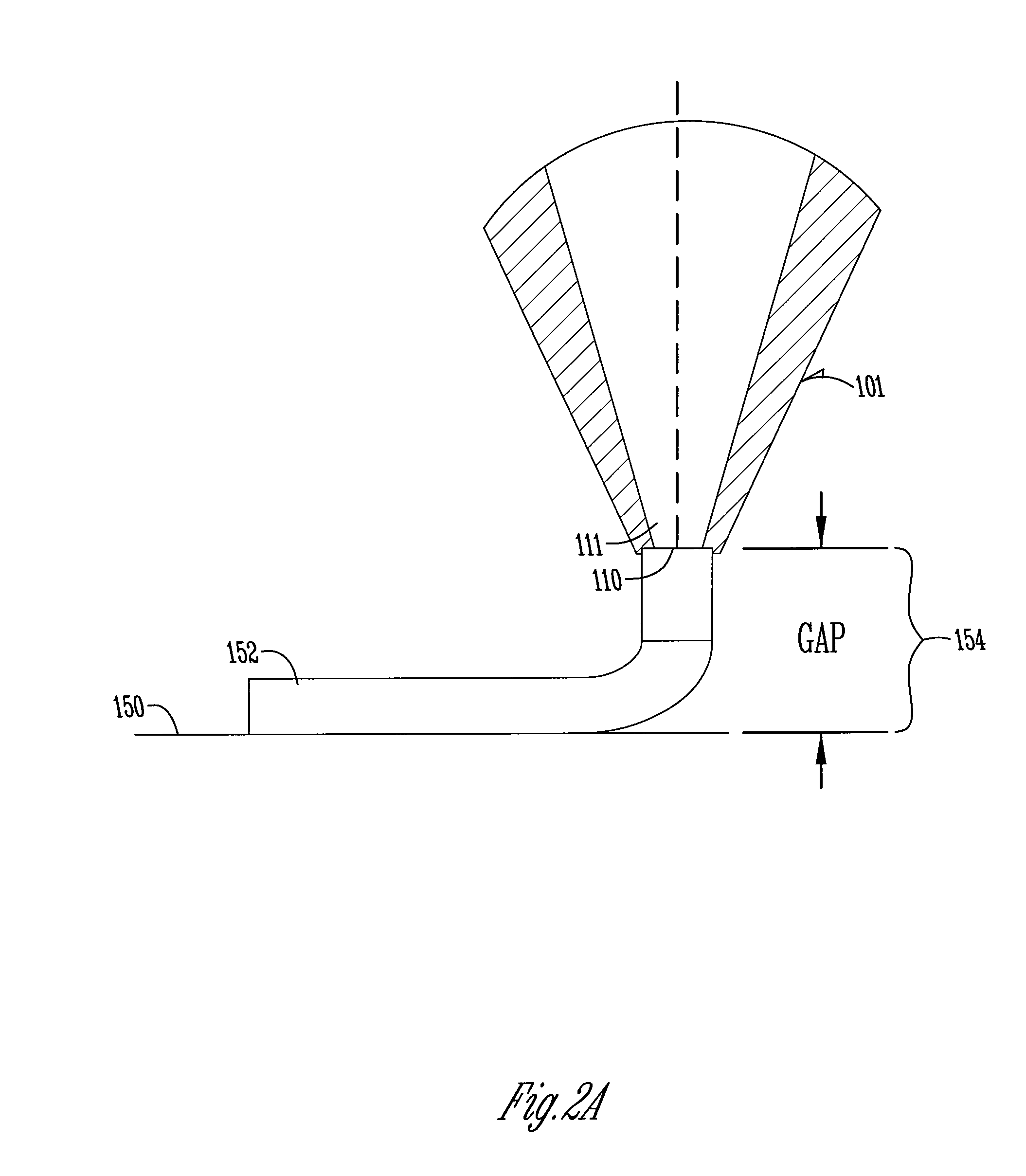Dispensing patterns including lines and dots at high speeds
a technology of dots and patterns, applied in the field of materials dispensing, can solve the problems of material waste, surface flatness, contact with the substrate, etc., and achieve the effect of reducing wall thickness
- Summary
- Abstract
- Description
- Claims
- Application Information
AI Technical Summary
Benefits of technology
Problems solved by technology
Method used
Image
Examples
Embodiment Construction
[0026]The present invention is more particularly described in the following examples that are intended as illustrative only since numerous modifications and variations therein may be apparent to those skilled in the art. The various examples include methods and apparatus for dispensing various materials including high viscosity materials.
[0027]Dispensing is described in U.S. Pat. No. 6,986,739, issued Jan. 17, 2006 for “Architectural Tool and Method of Use,” the contents of which are incorporated herein by reference in their entirety. U.S. Pat. No. 6,986,739 describes apparatus and methods for dispensing in various applications including in vitro and in vivo use in biological, tissue engineering, and medical processes. The present invention may also be used in such applications.
[0028]FIG. 1 illustrates one example of a material dispenser 100. The material dispenser 100 has at least one elongate feed channel 120 having an inlet 122 and a spaced outlet 124. The feed channel 120 may be...
PUM
 Login to View More
Login to View More Abstract
Description
Claims
Application Information
 Login to View More
Login to View More - R&D
- Intellectual Property
- Life Sciences
- Materials
- Tech Scout
- Unparalleled Data Quality
- Higher Quality Content
- 60% Fewer Hallucinations
Browse by: Latest US Patents, China's latest patents, Technical Efficacy Thesaurus, Application Domain, Technology Topic, Popular Technical Reports.
© 2025 PatSnap. All rights reserved.Legal|Privacy policy|Modern Slavery Act Transparency Statement|Sitemap|About US| Contact US: help@patsnap.com



